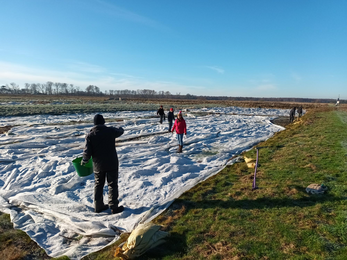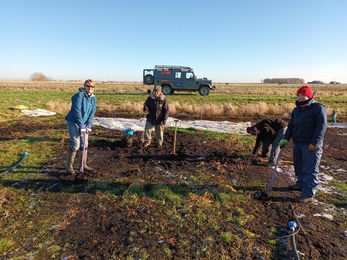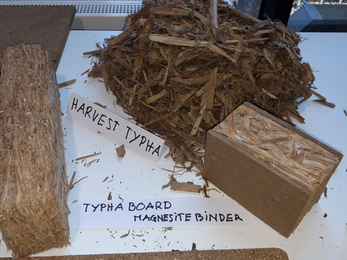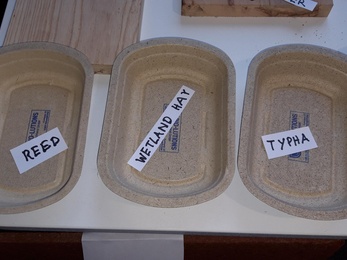In 2022, we continued work at our existing paludiculture project site, also known as Water Works / Engine Farm. An issue for this site, as for much of the country, was the exceptionally severe summer drought which impacted on the water management of the site and on our paludi crops.
To protect the sustainability of local water environments, abstraction was suspended periodically. This meant we were unable to pump water from the IDB drains, to keep our paludiculture beds wet. Due to the prolonged heat wave and the need to provide overhead irrigation to the newly planted sphagnum, we had already exhausted our site-stored water. Unfortunately, the sphagnum has suffered, and we feared we had lost it. This would have been a devastating blow after the many hundreds of hours spent planting by hand. However, we sent off samples of the sphagnum hummocks to the supplier (Micropropagation Services Ltd.) for testing and, happily, results have come back positive – the sphagnum is still viable and our expert adviser, Richard Lindsay (University of East London) assures us that sphagnum is amazingly resilient. Given time, it will recover and eventually form a canopy. Even better is the evidence of my own eyes. Lorna Parker and I were on site earlier this month with our CEO Brian Eversham and our new colleague Marc Fletcher (WTBCN resources Director – welcome to the Great Fen Marc), and new growth was visible on the sphagnum hummocks. We just have to be patient now.







